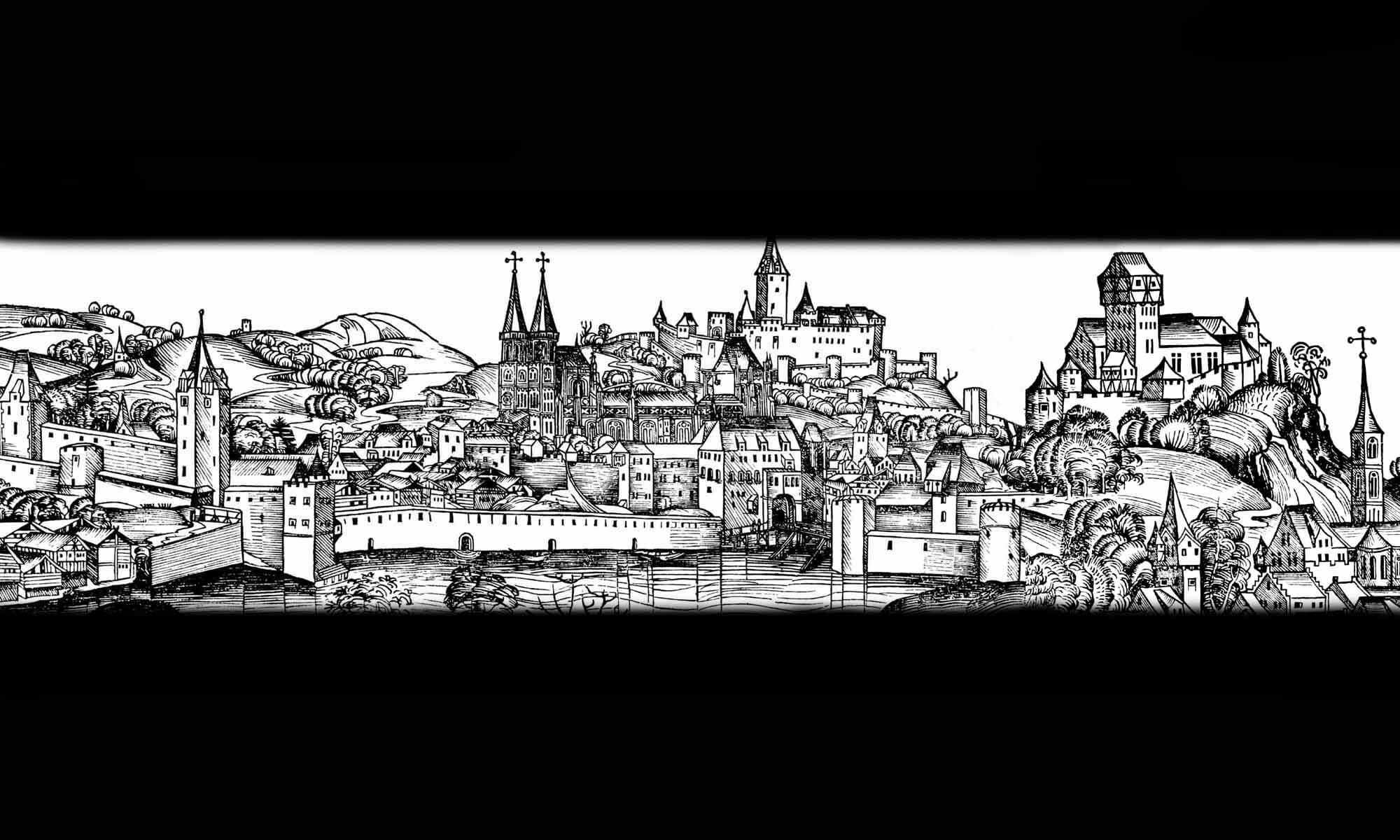History
The church of St. Ishmael in Camrose was first recorded in 1291 in the Taxatio Ecclesiastica, a census of ecclesiastical property in England, Wales and Ireland, compiled for tax purposes. The annual income of St. Ishmael’s was then estimated at a substantial 12 pounds, of which 17 shillings were payable to the king, as part of the tithe promised by the pope to Edward I Longshanks to finance his expedition to the Holy Land. This obligation was probably overseen by the Augustinian monks of Haverfordwest Priory, as the parish church at Camrose was under their patronage in the Middle Ages.
In 1536 the vicarage of Camrose had an annual income of 6 pounds 10 shillings 3.5 pence. At the time of the dissolution of Haverfordwest Priory, prompted by Henry VIII’s reformation efforts, the patronage of St. Ishmael’s Church was transferred to the English Crown. As a result, in 1543 a certain Arnold Butler of Johnston obtained a twenty-one-year lease of the rectory from the king, and two years later Henry Jones, a member of the royal household, received a lease of the tithes from the rectory. In 1620, Camrose rectory was once again a vicarage.
The spatial layout acquired by the church in the 14th and 15th centuries remained largely unchanged throughout the early modern period. Renovations were carried out in the 1870s and in 1883-1884. During these repair works, the tower battlements were partially recreated and the nave windows and the north portal were replaced with neo-Gothic ones. Unfortunately, the valuable triad of early Gothic eastern windows of the chancel was also removed. The oak roof truss also had to be replaced at that time. In 2000, the church was hit by a fire, after which it was renovated a year later.
Architecture
The church was built as an exceptionally long structure, consisting of a four-bay rectangular nave (19.8 x 6.3 meters) and a three-bay chancel closed on the east by a straight wall (8.9 x 5.2 meters). In the 14th or 15th century, a chapel was added to this simple layout on the south at the chancel and an annex in the form of a transept at the nave. Then, in the 15th century, a quadrangular tower was built on the west side, in the 16th century expanded with a massive, polygonal staircase turret.
The church was originally lit by narrow and splayed lancet windows, with the northern wall of the chancel devoid of any openings, and a triad of such openings created in the eastern wall. Perhaps, in accordance with medieval building tradition, there were no windows in the northern wall of the nave either. As in most Welsh village churches, the entrances were in the side walls of the nave, to the north and south, but no entrance portal was created in the west wall, either before or after the tower was built. In the late medieval period, some of the windows may have been replaced by larger late Gothic windows, but the eastern triad of lancets was certainly retained.
The west tower, unlike many other late medieval belfries in the region, was not tapered in its upper parts, nor was it reinforced at the base by a batter. Instead, it was topped with a parapet and battlement, set on corbels projecting from the face of the wall. The later stair turret, projecting from the north wall of the tower, was crowned in exactly the same way. Rainwater was drained from the upper open platform of the tower by channels with gargoyles. The tower elevations were smooth, not fragmented by cornices, pierced by a few small openings. The interior of the tower was divided into two floors above the ground floor. The latter was covered with a barrel vault and opened to the nave with a pointed arcade.
Inside the church, the nave was connected to the chancel by an arcade with a pointed archivolt. Both parts were separated by a rood screen, probably equipped with an upper loft, to which stairs led from a niche in the northern wall, lit by a single lancet opening. A carved early medieval stone was built into the chancel arch, while a 15th-century piscina with an ogee head was placed in the chancel in the southern wall. In the Middle Ages, the interior of the nave and chancel was probably covered by an open roof truss, while the walls could have been covered with plaster. The southern chapel opened onto the transept with a pointed arcade. The southern transept was similarly connected to the nave.
Current state
The church is now deprived of a large part of its medieval windows and the north portal, due to Victorian renovation. Furthermore, already in the 19th century there were no traces on the ground surface of the destroyed south chapel and transept. Despite this, St Ishmael’s Church is a good example of a medium-sized medieval sacral building, typical of the south-west areas of Wales, with the oldest walls of the nave and chancel dating back to the 13th century. It is also worth paying attention to the tower with a massive staircase and one preserved 15th-century gargoyle. The original, now bricked-up window has been preserved in the south wall of the central bay of the chancel. The original portal is in the south wall of the nave. In addition, a 12th-century font has been preserved inside the nave, and a piscina in the chancel. A recent fire mainly destroyed the 19th-century roof truss.
bibliography:
Barker T.W., Green F., Pembrokeshire Parsons, „West Wales historical records”, 1/1911.
Ludlow N., North Pembrokeshire Churches, An Overview of the Churches in North Pembrokeshire, Llandeilo 2000.
Ludlow N., North Pembrokeshire Churches, Church Reports, Llandeilo 2000.
Salter M., The old parish churches of South-West Wales, Malvern 2003.
The Royal Commission on The Ancient and Historical Monuments and Constructions in Wales and Monmouthshire. An Inventory of the Ancient and Historical Monuments in Wales and Monmouthshire, VII County of Pembroke, London 1925.

